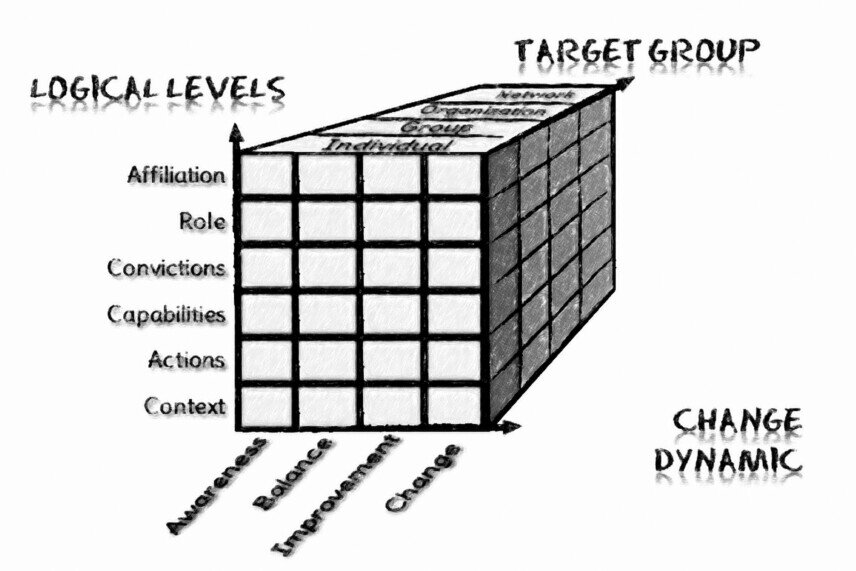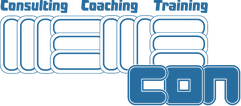Business-Change-Model
The Business change model facilitates navigation in the area of change management. It has three dimensions: change dynamics, target group, and organization levels. Each dimension is divided into individual elements that concretize the respective dimensions. This results in a three-dimensional cube that consists of 96 single cubes defined by the respective dimensions. An example is the cube on the bottom left formed by context, realization, and individual. The model defines application fields for methods and abilities and examination and indexing of situation analysis and measures. Thus, all existing abilities concerning group control that should be improved can be found in the intersection of the third logical levels, the second layer of the target group, and the third block of change dynamics.
Three dimensions define the Business change model: Logical levels, change dynamics, and target group.

- Logical levels
were originally defined by Robert Dilts. They consist of context (e.g., interest groups, geographical and temporal conditions), actions (e.g., visible behavior and acts), capabilities (e.g., technical, methodical, social and system-oriented skills), convictions (e.g., vision, mission, and values), roles (described by tasks, authority, and responsibility) and affiliation (e.g., religion, hierarchy level, function). The individual levels are building upon each other and should always be kept consistent (e.g., the actions and abilities should always fit the role).
- Change dynamic
describes the intensity of change. This begins with the realization of a situation (Awareness), goes over the preservation of the current condition (Balance) and the continuous evolution of the small steps (Improvement), up to second-order changes (Change) that stop doing things or replace them with new approaches. Desired measures and potential outcomes can be derived from targeted change dynamics. Balancing the actual situation creates, for example, only small, short-term changes for the employees.
- Target group
describes the concerned people of a change measure. This can be single persons (Individual), a small number of people (Group), a large number of people, e.g., a division or a total enterprise (Organization), or a complex structure of several independent organizations (Network). The target group determines the complexity of change activity. For example, for an individual, only its interests have to be considered. An organization requires the consideration of the interests of all participants.
The Business change model's application provides a common framework for the planning and execution of any measures.

